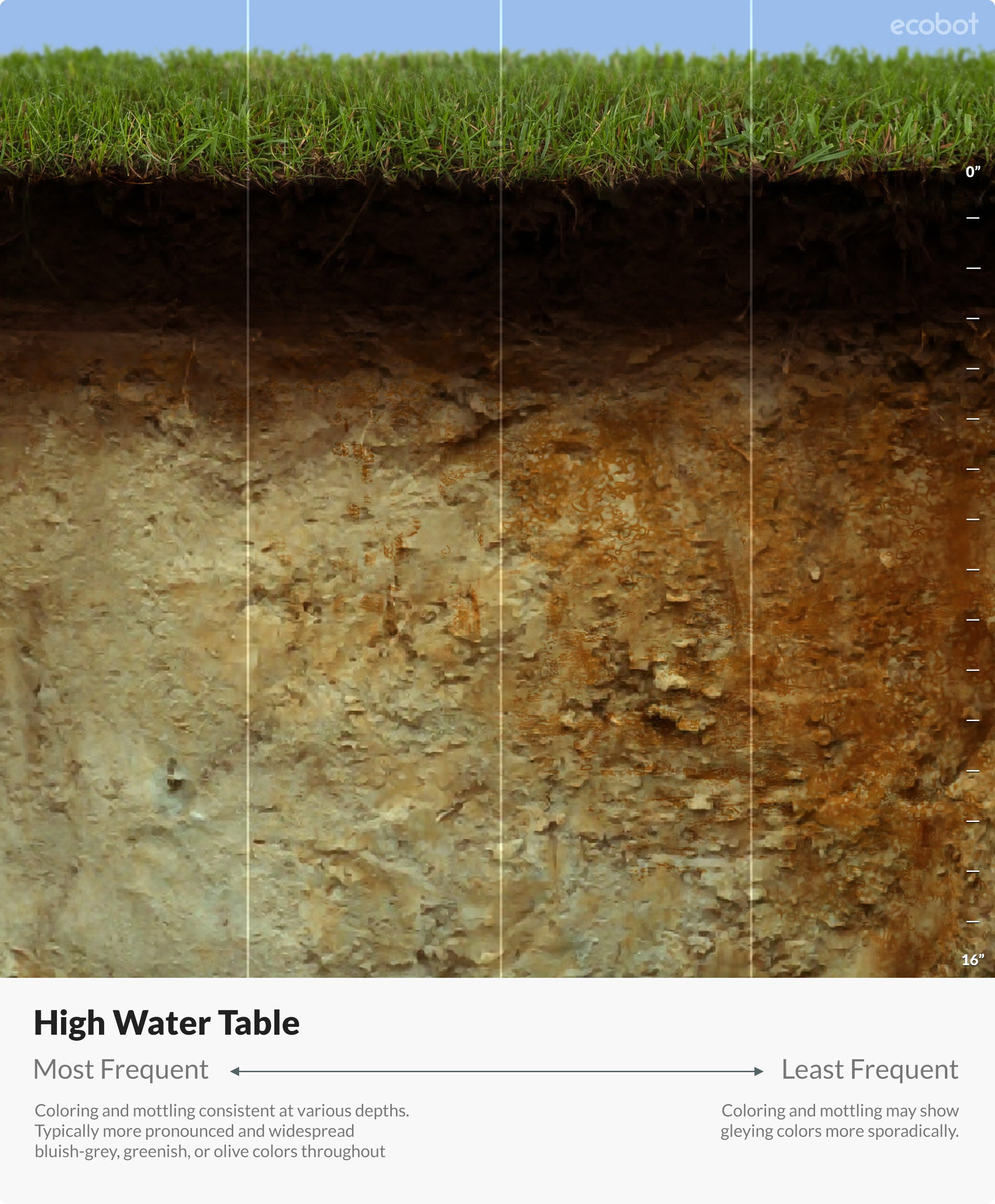What is Gley Soil?
Gley soil is the result of consistently waterlogged, iron rich soil, and is often identified by its characteristic bluish-gray or greenish-gray color .
Gleying or Gleyzation occurs when iron compounds are reduced by microorganisms in waterlogged, anaerobic conditions. The iron compounds are either removed from the soil completely or segregated out as mottles. Mottles appear as rust-colored splotches or streaks.
The characteristic bluish- or greenish-gray color is the result of the reduction of iron in soils that have been saturated for significant time periods. [1]
Identifying Gley Soil
Gley colors are identified using the Munsell Soil Color Chart. Check out our downloadable Munsell Soil Reference Guide.


Common Misconceptions, or Tips for Honing Your Gley Identification Skills
Gley soil can be found in most climates. The key factor in gley soil formation is water saturation, not temperature. Therefore, any flat low-lying region that has prolonged soil saturation, regardless of its temperature, can potentially have gley soils.
Gley means more than gray, and gley soil can contain multiple colors. Gley comes from a Russian word meaning wet bluish clay. But Gley soil can be a variety of colors and should be identified using the Munsell Soil Color Chart.
The bottom rows aren’t technically gley. Soils with a value of 3 or 2.5 are not considered as gley, but the presence of these values on the gley pages acknowledges the complexity and variability of soil conditions, and fulfills a practical need for including them.
Recording Gley Soil
Gley colors are recorded slightly differently than other pages in the Munsell Soil Color Chart. For any color found on pages Gley 1 or Gley 2, the page name does not equal the Hue.
To record a soil color from pages Gley 1 or Gley 2, follow the steps below:

Ecobot Collector

Ecobot Manager
Tips
- One exception to the steps described above are soils identified the N column
- N = neutral, which can include Pure BLACK, Pure WHITE, and the GRAYs in between4
- Colors found in the N column by definition have no chroma
- Example: Written as N 2.5/
- N 2.5/0 is also acceptable
We know soils.
Ecobot makes soil data entry and QA/QC intuitive and accurate.

The latest version of Ecobot Collector for iOS and Android provides new ways to manage multiple matrix and redox colors. Ecobot Manager improves your accuracy with soil indicator suggestions.
Citations
- Munsell Color Theory & Albert H. Munsell Fundamentals of Color. Munsell Color System; Color Matching from Munsell Color Company (2014). Available at: https://munsell.com/about-munsell-color/.
- Schoeneberger, P.J., D.A. Wysocki, E.C. Benham, and Soil Survey Staff. 2012. Field book for describing and sampling soils, Version 3.0. Natural Resources Conservation Service, National Soil Survey Center, Lincoln, NE.
- Guide to Texture by Feel. USDA, NRCS.
- United States Department of Agriculture, Natural Resources Conservation Service. 2018. Field Indicators of Hydric Soils in the United States, Version 8.2. L.M. Vasilas, G.W. Hurt, and J.F. Berkowitz (eds.). USDA, NRCS, in cooperation with the National Technical Committee for Hydric Soils.
- Ellefsen, D. B. S. W. F. C. L. G. W. F. S. a. K. J. (n.d.). USGS Scientific Investigations Report 2017-5118: Geochemical and Mineralogical Maps, with Interpretation, for Soils of the Conterminous United States, 2019 rev., https://pubs.usgs.gov/sir/2017/5118/sir20175118_element.php?el=26
- Munsell Color (X-Rite). (2018). Munsell Soil Color Book, 2009 rev. Munsell, X-Rite.
- Munsell Color (X-Rite). A Dictionary of Color Terms. https://munsell.com/about-munsell-color/how-color-notation-works/dictionary-color-terms/
